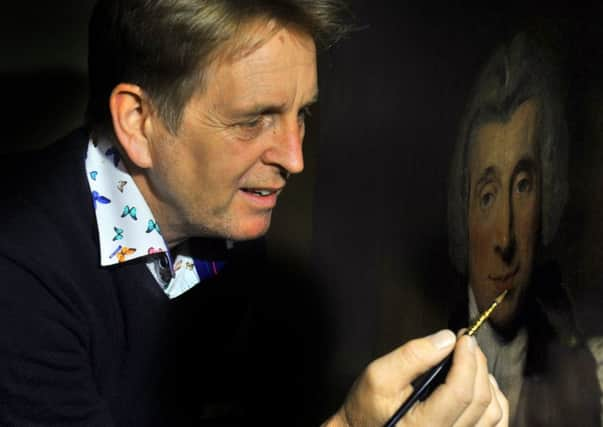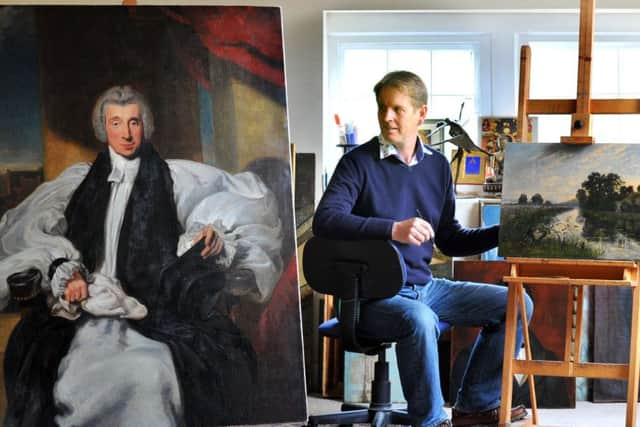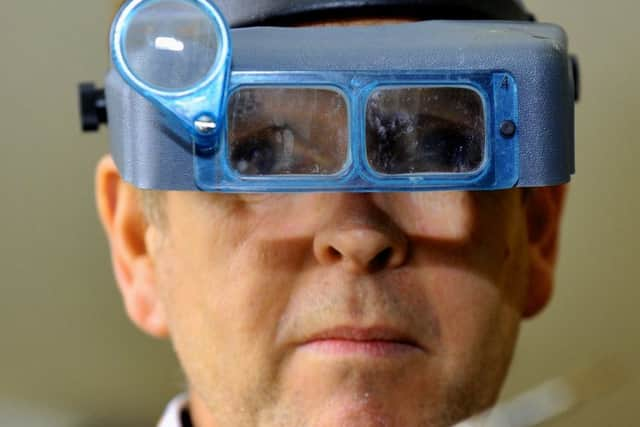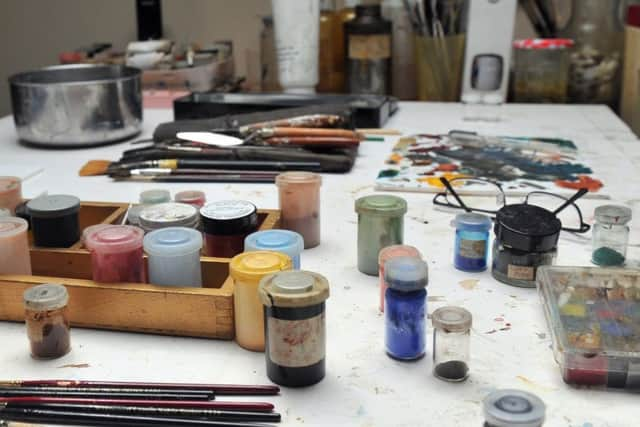Meet David Everingham - one of Britain’s most accomplished art restorers living in Harrogate


These are not great masterpieces, although one may well be by Marczi de Laszlo, the younger brother of the more celebrated portrait painter Philip. Another is by Thomas Lawrence. They are all – well, nearly all – paintings that each of us would be pleased to have on our walls. But it is highly unlikely that we will ever be able to see them, for this is not a conventional gallery where the public are allowed in to view. It is an ever-changing workspace.
Advertisement
Hide AdAdvertisement
Hide AdThe Lawrence is heading back home to Durham University, safely back in its enormous (and very heavy) gilt frame. It is of William Van Mildert, the Prince Bishop who died in 1836, and who was one of the founders of that seat of learning. He will once again stare down on the students below him in the hall of the college that bears his name. And the de Laszlo will be returned to its owner, who lives near Wetherby. This one is of a young woman, dressed for a party, with an elaborate gown and with a feathered fan in her lap. She is sitting in what could well be an Italian landscape, with a large house on a hillside in the background to one side, and a wooded rocky bluff to the other.


This is the studio of one of Britain’s most accomplished picture restorers, David Everingham. David was born in York, raised in Harrogate, and returned to the town several years back, where he established his business – now a “go-to” firm if you have a painting that needs to be restored to its former glory.
David works on the upper floor of an extension to the rear of his home. The first room, reached by a steep flight of stairs, is where one or two of the paintings awaiting attention rest, along with several of their frames. The second is where all the real work takes place. Many canvases are stacked against the wall, there is an easel where the painting getting today’s attention sits and there are brushes ready to be picked up, while oils and solvents sit on a shelf.
Pictures arrive, often encrusted with dirt from the passage of time. Others have been damaged and some, sadly, have been defaced.


Advertisement
Hide AdAdvertisement
Hide AdThe young woman in the party frock had only an accumulation of the muck of the years on the surface. In fact, David contacted her owner when he had worked on the portrait for a while, and sent him a “work in progress” message. On one side of her face, the lass glowed with a lifelike pale skin, and on the other, she looked as if she’s been locked in a fake-tan salon overnight, with the machines left on overnight. She was a rich mahogany.
David’s clients can be private collectors, businesses and local authorities – such as Barnsley, with whom he has a close relationship.
A painting on a second easel is from them, a rather lovely Canaletto-like scene of a busy waterside. And then there are the many church authorities who beat a path to David’s door. He is also currently working on some frescos in St Anne’s Cathedral on George Street in Leeds. Built in the arts and crafts Gothic style that was so popular at the very end of the Victorian era, it has some (now faded) wall-paintings, and David is – with an assistant in this case – working on their restoration to full vigour. “That is completely site-based”, he says.


He liaises closely with his clients, offering them professional advice. It’s delicate work and the costs vary widely. “Each painting is different and each one must be treated on an individual basis,” he says.
Advertisement
Hide AdAdvertisement
Hide AdDespite his skills, his initial training was not in the art world at all. He studied biochemistry at Warwick University and afterwards he took some time out to go travelling, and while in Australia he met his wife-to-be, Philippa. They now have three children, Maddie, Tim and Daniel, who will be working alongside his father this summer. “He’s the one who might follow on in this business, but that will be entirely up to him.”
Down under, David worked as a teacher until a chance meeting at a party changed his life. “I was talking to this chap about what we did and how we enjoyed our jobs, things like that, and he told me that he’d just been turned down for a course in art restoration. And, knowing my scientific background, he told me that it might be something that would suit me – that art was one thing, but the science of conserving it and restoring it was quite another. I thought about it for quite a while, realised that he was right, and I applied.”
David got in and his career turned around completely. He returned to the UK and did an MA in the Conservation of Fine Art at the University of Newcastle. From there, he became part of the team at the Bowes Museum in County Durham, working on many of the masters in its first-rate collection, before setting up his own studio in Harrogate, where the family have lived for over 20 years.
He explains how canvasses can change, “According to humidity. It’s a living and breathing thing. And it stretches and contracts very subtly. It doesn’t ‘stand still’. That’s one of the reasons for paint flaking off. Painting on plaster, you don’t have that problem but they are subject to ‘outside influences’, the worst of which is water damage. Some churches just don’t have the resources to keep roofs secure, which is a terrible shame.”
Advertisement
Hide AdAdvertisement
Hide AdOnly a few of the major collections, such as the Tate and the National Portrait Gallery, can afford the fully-controlled environment needed.
Only once, says David, has a canvas defeated him. “It was a portrait, said to be of Robbie Burns, and it was so far gone that I just had to say to the owner that they’d be better off leaving it as it was. However, technology moves so fast these days that there well may be a time in the future when it can be brought back to glory again. Laser restoration is already being developed, and it has had spectacular results. I’m still using conventional solvents and the newer gels, but I have to admit that I am deeply envious of the techniques I see being used in TV series like Fake or Fortune? Money is no object there.”
David works on several projects at a time. A recent success was his restoration of a Banksy, painted on boards, two of which had split. The owner was over the moon. The most venerable painting he’s worked on was a Pacheco, showing a guard of honour around a dead monk, painted in 1611 in Seville. “That was very special,” says David.
“Yes, there are some canvases that people bring to me that are, let’s say, not what I would wish to own myself. Perhaps they are just badly painted, but they all mean something to their owners and you have to respect that. They want them in their homes, in their lives, and that’s my job, to return them looking refreshed. My opinions do not matter”.
Advertisement
Hide AdAdvertisement
Hide AdDoes starting work on a painting that could be worth many thousands of pounds make the paintbrush in his hands shake a little? He smiles and says: “There is always a little nervousness, yes. But then the excitement takes over. And the big question mark comes into play. It asks ‘what lies beneath?’”
For more information go to www.everinghamconservation.co.uk